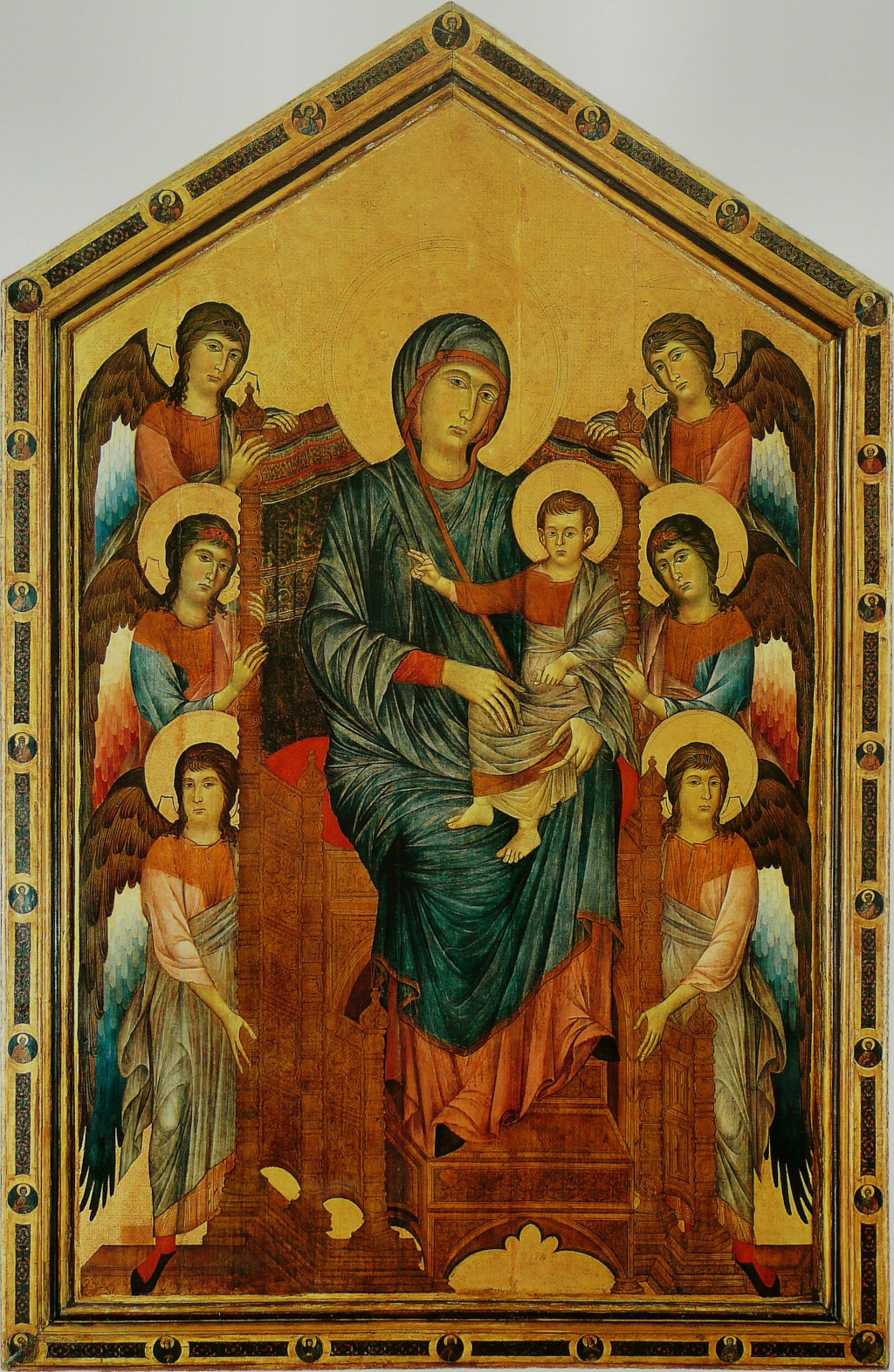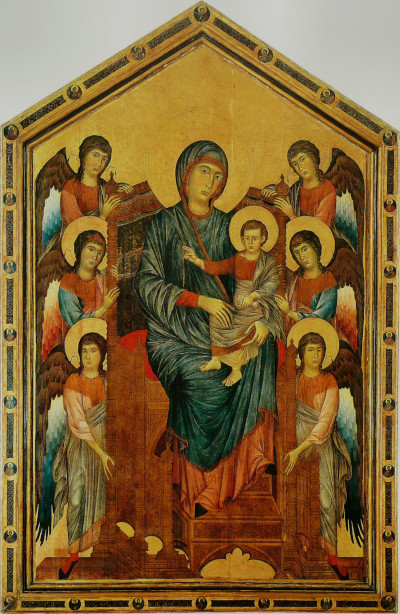The Maestà was constructed by Cimabue in circa 1280 and can today be found in the Louvre in Paris.
Introduction
Cimabue completed the piece, therefore, a few years before Santa Trinita Maestà, which covers the same theme and bears a considerable resemblance. They are also of similar sizes, with this piece measuring just over four metres in height and having the same pointed angle at the top of the frame.
Description
This Maestà differs in the gestures of the Madonna and Child, with the latter holding his right arm outstretched. Two finers point outwards, whilst his gaze is fixed directly upon us. His mother also looks in our direction, and holds her left arm around her child in a symbolic image of protection and comfort. Her right hand is placed lovingly on the child's right knee.
In a similar manner to the artist's other interpretations, we find the long, narrow facial features which adorned most of Cimabue's portraits. The lips are small, and placed together in an expressionless manner. The overall mood is neutral, giving a distance between ourselves and the figures pictured. This links to more traditional art styles, where as the later phases of the Renaissance would start to connect us more effectively to the portrait figures.
Six angels flank either side of the two main figures, signified by their large brown wings, alongside their golden halos. They both lean in towards the center of the painting which helps to lead our eyes to the key part of the composition. The throne on which the Mother and Child sit is shown from an angle, which is the traditional approach normally taken at that time - his follow up piece broke with convention and placed the throne directly facing us.
The frame is customised for this work, and included some delightful detail with small circular portraits dotted across the frame edge, with long rectangles added in between each. The inside of the frame makes use of the same dark tone, and clearly this was designed specifically to match the artwork found within it - additionally, with its angled tip, most frames would not have been suitable.
Medium
Cimabue used tempera for this piece and it would be a number of years before Italian artists would make the switch to oils, through the influence of north European artists. The artist used an alternative method known as distemper earlier in his career.
Legacy
Many elements of this piece would influence other artists in how to take on the Maestà within the visual arts. Whilst Cimabue made some small tweaks in later interpretations, most elements continued into those as well. We also know that one of the specific artists to have been influenced by this piece was Duccio di Buoninsegna, who worked closely alongside Cimabue in a pupil-teacher scenario.
Location
This painting remains in France after being taken during the Napoleonic period in which many Italian masterpieces were taken and stored in France. It is believed that the painting was originally in a church in Pisa at the time that it was acquired by force, and possibly was on display alongside Giotto paintings which were also taken at the same time.
Large Image
 Maesta in Detail
Maesta in Detail




